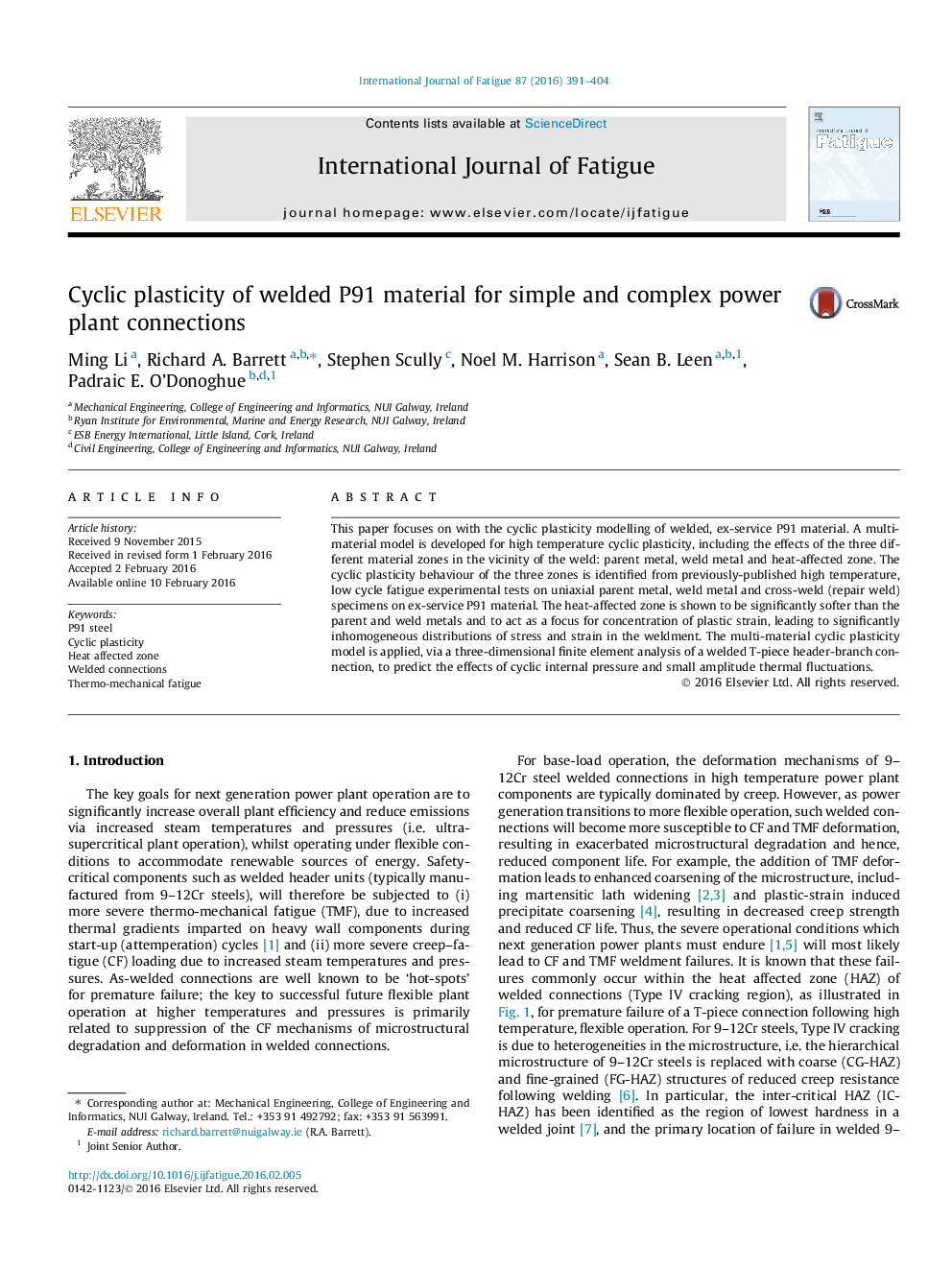| Article ID | Journal | Published Year | Pages | File Type |
|---|---|---|---|---|
| 778106 | International Journal of Fatigue | 2016 | 14 Pages |
•Detailed finite element investigation of cross weld specimens highlights the key role of plastic strain localisation in the heat affected zone of a welded connection.•Identification and calibration of cyclic plasticity material constants for parent, weld and heat affected zone regions using a non-linear kinematic–isotropic hardening material model.•Application of a multi-material cyclic plasticity model to a T-joint welded connection. The predicted critical location corresponds to the location of failure observed in-service.
This paper focuses on with the cyclic plasticity modelling of welded, ex-service P91 material. A multi-material model is developed for high temperature cyclic plasticity, including the effects of the three different material zones in the vicinity of the weld: parent metal, weld metal and heat-affected zone. The cyclic plasticity behaviour of the three zones is identified from previously-published high temperature, low cycle fatigue experimental tests on uniaxial parent metal, weld metal and cross-weld (repair weld) specimens on ex-service P91 material. The heat-affected zone is shown to be significantly softer than the parent and weld metals and to act as a focus for concentration of plastic strain, leading to significantly inhomogeneous distributions of stress and strain in the weldment. The multi-material cyclic plasticity model is applied, via a three-dimensional finite element analysis of a welded T-piece header-branch connection, to predict the effects of cyclic internal pressure and small amplitude thermal fluctuations.
